There have been an abundance of SFF novels depicting dystopian conditions coming in the next century but relatively few that have offered a vision of governing the future. What would it be like to live amid the surviving or transformed structures of a different world? Would ordinary people have any say or freedom? Here are six SFF novels depicting future systems after a transformation and partial destruction of present societies. These may not seem all that hopeful, since there is plenty of injustice and inequality that survives. But I think each in its way captures a level of human resilience that could translate into new structures for governing the future.
Agency
William Gibson’s Agency, building on ideas, setting and characters in The Peripheral, is all about the individual’s capacity to act. Trouble is everyone in the story seems to lack agency or at best remains mystified about whether or not they have any.
We start off in an alternate 2017 (Clinton won, no Brexit) when Verity, the “app whisperer” in San Francisco, takes a job from a mysterious corporation to evaluate a new headset and eyeglasses.
Abruptly she finds the high-tech rig talking to her in the voice of Eunice, an advanced artificial intelligence, who enlists her in a series of urgent actions of questionable legality. But Verity, for reasons she can’t understand, trusts Eunice and the network of people she is put in contact with. In fact, the decision to trust someone is the closest thing to agency anyone has in this novel.
Before Verity knows exactly what’s going on, she’s on the run from her original employer; Eunice abruptly disappears; and a few people get in touch with her via a strange robot. They claim to be in London. Eventually they make it possible for Verity to visit their world by sending her awareness to inhabit a much more sophisticated android, one that looks human and is considered semi-sentient in its own right. With a shock, Verity realizes that she is visiting the future.
That future is 2136, the timeline and the characters we came to know in The Peripheral. Gibson skillfully alternates short chapters from Verity’s 2017 reality with Wilf Netherton’s 2136. Netherton is a sort of fixer working for the mysterious Ainsley Lowbeer, apparently a London cop, but actually an elegant enforcer for the powers that seem to hold things together. These are referred to as the aunties, powerful algorithms that not only manage things but try to predict the future and make contact with the branching worlds known as stubs.
The world of 2136 has been through the slow degradation and loss of population known as the jackpot. We see it only in glimpses of the future London, largely empty of people, though it has busy neighborhoods of cosplaying real people and semi-sentient androids.
This is a world of vast inequalities in which members of the kleptocracy, known as the klept, are often struggling with each other. But their power seems to be kept in check partly by the aunties and occasional interventions by people like Lowbeer and a nasty nanotech weapon, the tiny swarms of (dis) assemblers that can rearrange people at the molecular level. Despite all the strangeness and manipulation in both timelines, some people manage to carry on with more or less regular lives. The world(s) seem on an edge of disaster, but the system holding it together keeps working.
Record of a Spaceborn Few
Becky Chambers sets aside conventional adventure plots in Record of a Spaceborn Few to create a convincing human society in space that is actually hopeful. Hopeful, but not easy. From the outset of this novel, third in the Wayfarer series, we are reminded of how fragile life can be on settlement ships that orbit a star.
An error leads to the catastrophic break-up of one ship in the Exodus fleet, with the loss of tens of thousands of lives. But her interest is not just the fragility of a space community but the interweaving bonds that hold people together and that make a good society.
She skillfully envisions ordinary lives of a space community of ship residents. Their world is ship-bound, as the cluster of vessels orbit a star that another species of beings has let them take over. That species has also donated powerful technologies that enable the humans to thrive in that planet-less world.
The tragic accident that opens the story is not a starting point for action, mystery or adventure, but rather a backdrop that reminds the Exodans of their basic values.
The arc of each character forms a satisfying whole, as they search for a new role in life. Not all find it, but even the fatal errors, like the disaster that opens the book, become an occasion for reminding the greater community of who they are. It may seem like a series of separate stories, but they have the cumulative effect of showing you how a society works, what holds it together, how it is tested.
That’s the special genius of this book, that it can take you through personal decisions that change lives but keep you mindful of the social bonds and values that make those individual choices more meaningful. Because everyone is contributing in their way to a greater good and getting in return the inner fulfillment that keeps them and the whole community going.
After all the stories of generation ships falling into one kind of chaos or another, I love seeing a convincing story of how things could work, how humans might actually survive after destroying earth and overcome the urges to conquer and dominate.
Too good to be true? Yes, of course. But this is not exactly a utopian story. It is by all means a hopeful one that shows people managing to make the best of a limited life in an essentially closed system. Reminiscent of the future envisioned in the Star Trek series but much more grounded in everyday reality.
Stealing Worlds
Karl Schroeder is a brilliant thinker and excellent writer, and he has forced me into thinking hard about the possible links between virtual and physical realities. Stealing Worlds shows a future in which virtual means could be used to assign real world value to things our present society views as less tangible or valuable, like the environment or the damage caused to the earth by present economic activity.
He sees blockchain technology as one means of giving economic value to virtual or social realities, and Stealing Worlds draws on this as well as deep gaming worlds to represent a possible near-future route to a world revolution of sorts. Sure enough, the future governance he envisions is dominated by secretive corporations and nasty enforcers, but he also sees a way in which virtual worlds can subvert an exploitive dystopia.
The central character, Sura Neelin, is an interesting off-beat misfit trying to understand what happened to her assassinated father and get back at the people she thinks were responsible for his death. The story works in a convoluted way through multiple complications, expounding as it unfolds on a whole theory of economic change, toward a truly idealistic and not altogether convincing climax. Nevertheless, the ideas are compelling enough to hold my interest throughout and have left me with lots to explore than I never before considered. Schroeder depicts overlapping virtual and real worlds in a way that would make it possible to transform the world for the better.
Dystopian Lawyer
Christopher Brown’s two-book set (Rule of Capture and Failed State) about his hapless yet strangely effective dystopian lawyer, Donnie Kimoe, may come too close to our dystopian present for comfort, but the stories also shine with ideas about a better way to envision the future. As he put it in a recent essay in Literary Hub: “we need to write our way through our own ruin to have any hope of finding what could be on the other side.” He does that brilliantly in these two fast-moving legal scifi thrillers. (Tropic of Kansas, his first book, is a kind of prequel to these two.)
And what ruin he depicts.
A war with China has broken up the country. The Midwest has collapsed from climate change. Millions of refugees have fled south, only to be confined in fenced zones where their labor can be forcibly extracted. A presidential election has been stolen, and its fate now seems to rest with the courts.
There is a Houston that has reverted to a half-wild state – subdivisions underwater much of the year, highways cracked apart, squatters in tumble-down buildings. But it’s also a ruin in which the rich retain their gated, heavily guarded communities.
The forms of a justice system survive while the laws guiding them strip away basic protections of the rule of law. Protest the system and your citizenship can be stripped away. Pose a real threat and you can wind up dead.
The world of these novels presents not just a broken earth but broken people, like Donny Kimoe and many he knows and meets. Some have survived torture but cling to their belief in a new truth, a faith in a communal society where all are taken care in return for honest labor. Yet those folks can also resort to the violence and raw revenge they want to take on those they blame for ruining the natural world. Others have broken themselves to side with the wealthy who are trying to perfect their seizure of power in the name of forestalling anarchy.
In the end of each book Donnie Kimoe works out a deal and commits himself more and more to a broadly idealistic vision of the future. It’s a beautiful vision that starts with people changing their whole relationship to the land, basing it on reciprocity and respect, in the hope that such a change would spill over to the ways people treat each other. Some forms of “property” like seeds becomes open source, no more patents on genomes. And the plantation model of forced labor on huge agricultural holdings is to be replaced with independent farms. Donny wants to kickstart a new ecology. Given the depiction of the power of dominating economic and political forces, I wasn’t completely convinced by Kimoe’s methods of using law to create a breathing space for a new order, but it is an interesting vision of governing the future.
The Centenal Cycle
Malka Older’s Centenal Cycle of Infomocracy, Null States and State Tectonics is for me the most interesting, hopeful and liveable vision of governing the future that I’ve yet found. Yet these books emphasize that the system they describe is about to change into something different after only a 30 or 40 year reign in the near future.
Older follows her cast of political activists across the globe as they follow the intricacies of electoral campaigns in the 100,000-strong subdivisions, or centenals, into which most of the world has been divided. There are holdouts, like Russia and Saudi Arabia, referred to as null states, but most of the world’s population gets to vote in ten-year elections for the governing parties of their choice. The party that wins a majority of centenals becomes the Supermajority, but much of the real power is wielded by Information.
This is the central hub everyone turns to for trusted coverage of everything going on in the world. To earn that trust, the people working for Information have to adhere to high standards of accuracy and impartiality. (If only we had such a source today!) Of course, it’s not perfect, and the stories of the three novels of the cycle are all about tracking down the culprits who would undo the system.
Despite the holdouts among the null states, the participating micro-democracies have maintained peace among themselves and helped build a more prosperous world. Yet, as the exciting plots of each of the three novels unfolds, we find the operatives for Information and some of the major political parties, working feverishly to head off sabotage and conspiracies that threaten the whole structure.
These are the most intriguing and inclusive stories about governance I know. In a strange way, the very fact that micro-democracy may be about to transform into a different system is also hopeful. It’s a testament to the adaptability and inventiveness of whole populations having to reinvent their futures. It’s a little hard to imagine exactly how all these separate governments, especially when clustered so closely in major cities, would really function (pay for all their services, deal with inequality, respond to conflict), but I’d rather struggle through that vision of future governance than endure the shadowy forces at work in Gibson’s London or Brown’s Houston.
The Shape of Things to Come
In The Shape of Things to Come, a history of the next century and a half (written in the 1930s), H.G. Wells presents a detailed imagining of how humanity might endure one disaster after another to emerge with a Star Trek-like vision of a future governance where want and greed are abolished. I want to imagine a hopeful future, but Wells cuts out a lot aspects of human nature to get there.
His vision of the middle decades of the twentieth century is pure disaster – economic collapse lasting decades, terrible wars that obliterate whole cities and the destructive dominance of small-minded nationalisms and power struggles. The world descends into chaos as governments collapse and a plague drastically cuts down the population. All the damage is done by the 1960s.
What saves the day is the eventual emergence of a small cadre of highly disciplined leaders who manage to take over the key systems of world transport, communication, food production and distribution, and most important in this scheme, education. In its early version, this is the Dictatorship of the Air that takes control of all airports and the means of manufacturing planes and other forms of transportation.
Wells envisioned a world unified by information networks, headquartered in Barcelona, that spreads a message of hope and humanistic altruism around the world. A world mind, if you will, that helps bring together the remnants of a world torn apart by the narrow minded economic and religious systems of the past.
Over the course of a century or so, beginning in the late 1960s, this disciplined minority of the Dictatorship gradually evolves into a World Council and eventually even that is dissolved as the system functions without centralized control. That is possible because all the changes bring about a fundamental shift in human nature. Wells believed that even the most humble of people could be uplifted through education to become creative contributors to society.
But neither do national governments and the greed-driven ethic of free-for-all capitalism. These fall by the wayside. Thanks to advances in medicine, people live longer, and their lives are no longer plagued by the grinding power of debt. Over the course of a century, a purpose-driven humanity, all its material needs satisfied, is educated into a new mindset where conflict over scarce resources or racial divides is no longer necessary.
Wells didn’t see any problem with a single dominant world culture and economic system. This was his “dream” as set forth in The Shape of Things to Come. Everyone advances, everyone is taken care of, physical labor is performed by the world’s youth in a two-year period of public service. It’s an elitist and definitely patriarchal system that has little place for women.
……
So there are six ideas of what governing and living in the future might look like. Becky Chambers and Malka Older definitely get my vote – or at least hope – for a possible future I’d like to try. Unfortunately, our increasingly knife-edge reality pushes us in more destructive directions. But I have to believe in the resilience and power of community as well as the brute force of violent politics. How about you?
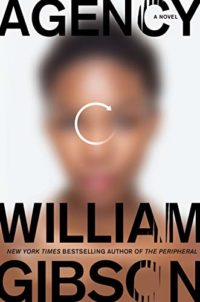
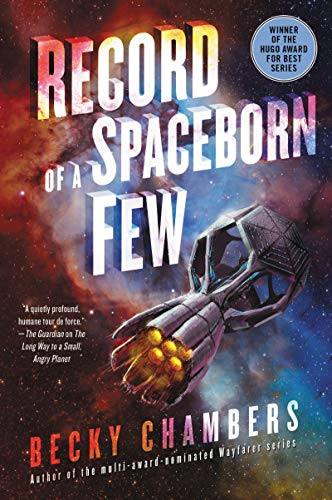
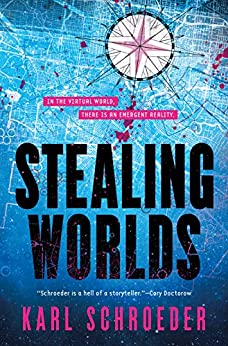
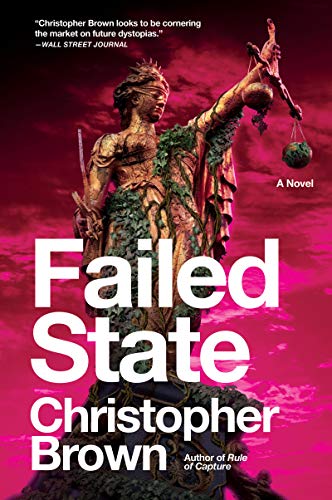
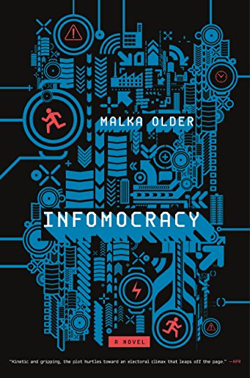
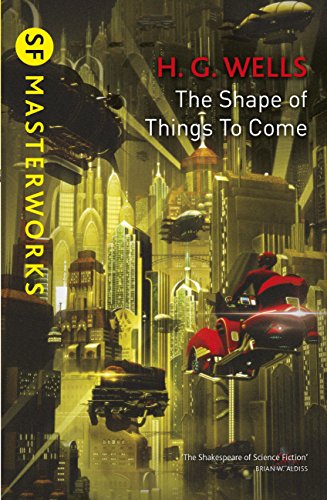



Added the Centenal and Dystopian Lawyer series to my TBR. Mahalo for the recommendations!
Thanks for dropping by. Let me know if you have any suggestions for me to add to this list. I’ll be doing follow-up posts on this theme.
While not my favourite, Autonomous by Annalee Newitz could fit the theme.